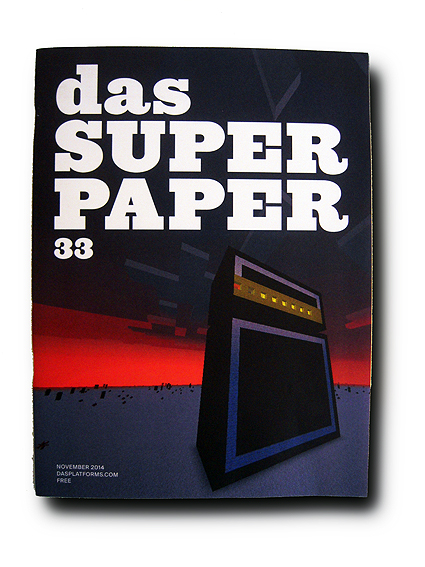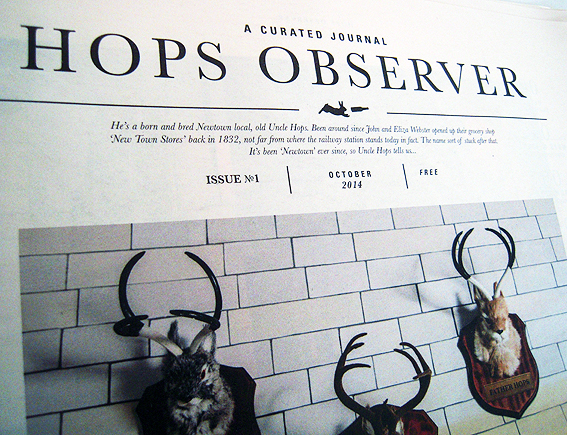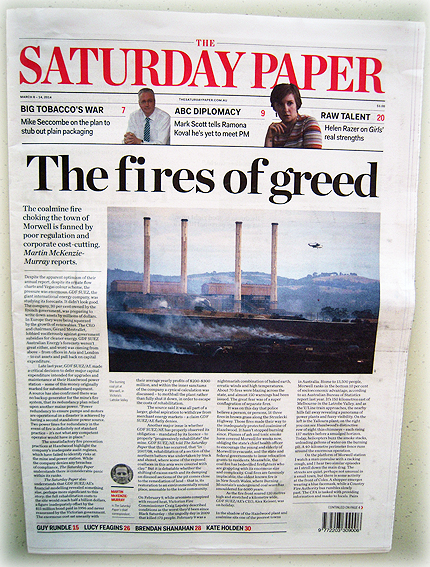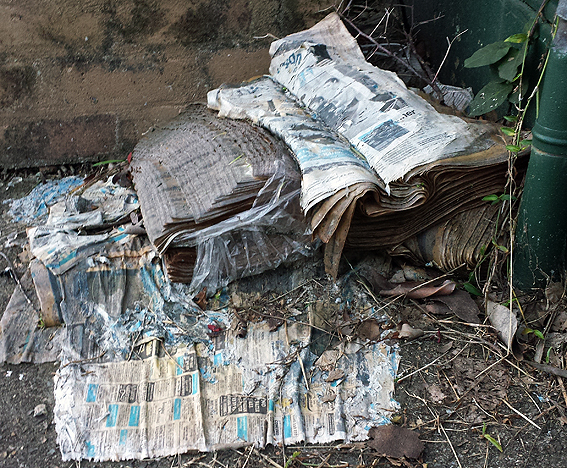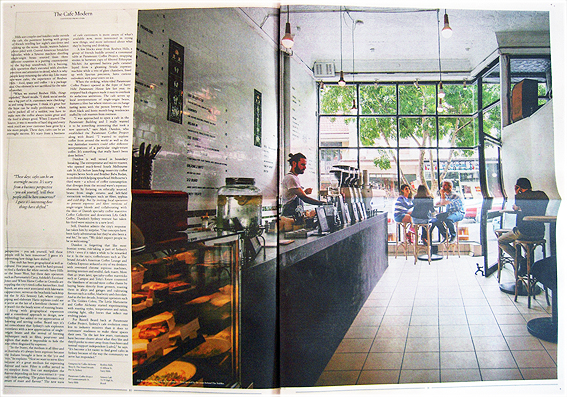A German magazine about superannuation?
Most certainly not. This is the paper outlet for the Das Platforms contemporary art and culture group which also encompasses video and online writing.
Originally launched in 2009, this particular issue appears to be the last of the paper editions of Das Superpaper with plans to replace it with a new magazine produced in Europe.
It’s always a poignant moment to see the end of a printed publication as it passes from expectancy into being and then finally preservation in the archive. The nature of a magazine changes with the knowledge that there will be no further copies and that the paper trail has reached a finite end. What has existed still remains but now it is more in the nature of a memorial rather than an organism shifting and twisting, branching out in new directions, following the waves and pulses of outside influences.
And for anybody with an affinity with things of paper, there is a double sadness here with the unspoken recognition that, perhaps, much of what is covered within these pages does in fact belong in video and online where there is light and movement, sound, links, connections, feedback and interaction.
This is a magazine. It is Paper. There are words and pictures, perfectly fine and interesting words and pictures, all reproduced very skilfully by Spot Press, but that is all it is. Words and Pictures. Feel the furriness of the ink saturated pages, the smoothness of the cover, smell that unmistakable combination of dry pigment on paper, the scent of newness that gradually fades but never dissipates entirely, rediscovered anew with each encounter.
That is what Paper is. And that is what is gone now.

